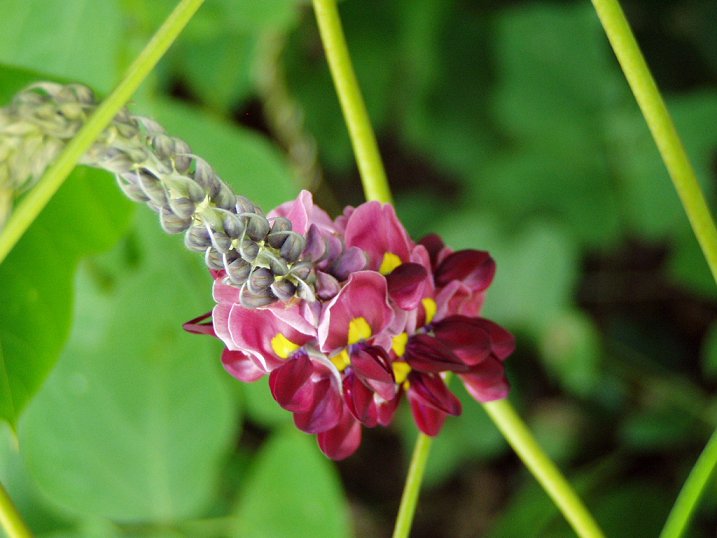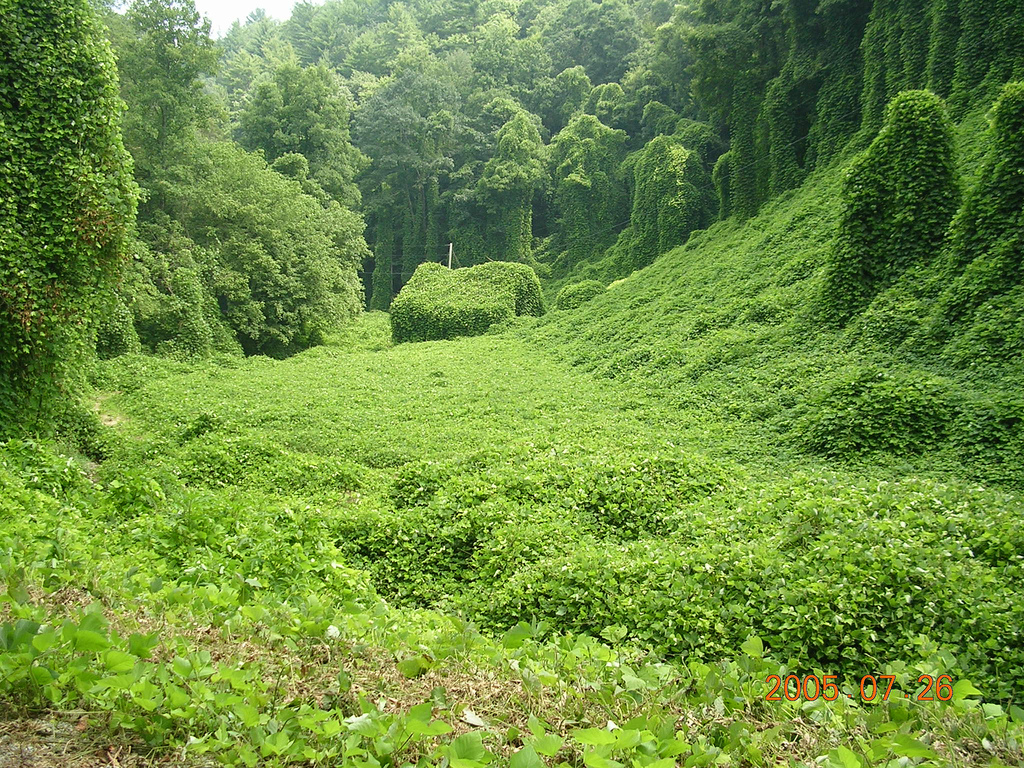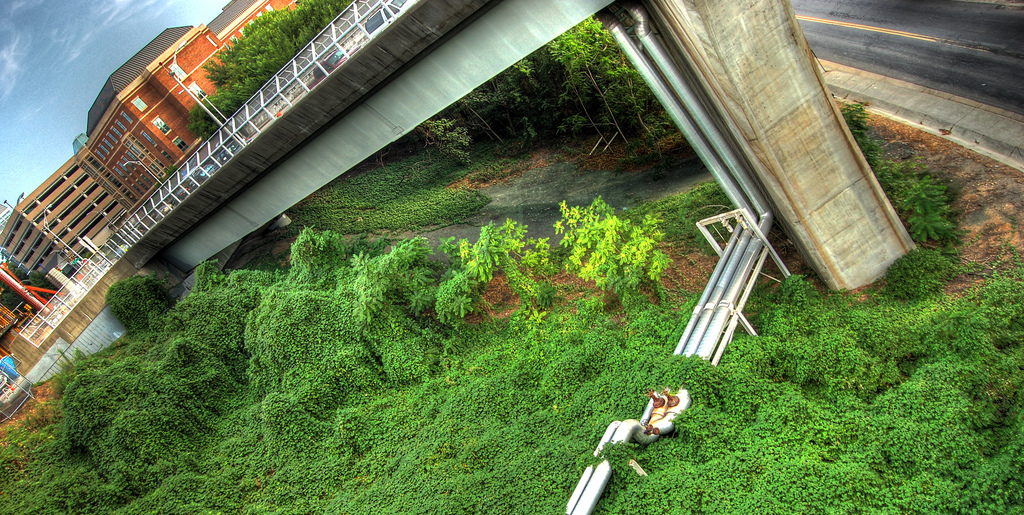During the Reconstruction Era after the Civil War, Northerners who moved into the South to profit were referred to as carpetbaggers, a term referring to the style of luggage many of them carried. Kudzu, although not from the North, is a modern carpetbagger and is definitely prospering in the South.

Kudzu, Pueraria montana, has become one of the most visible and recognized plants in the south. Native to Asia and the Pacific Islands, the vine, actually a legume, was first introduced into the South to help with erosion control at road cuts. In the 1930’s and 1940’s, Southern farmers were given eight dollars an acre to plant Kudzu to help with erosion control. During this same time, Channing Cope ,the farm editor of the Atlanta Constitution and one of the South’s most influential newspapermen, became Kudzu’s greatest advocate.
Cotton isn’t king in the South anymore…Kudzu is king!
Since then Kudzu has become the most recognizable invasive species in the South. In 1953, Kudzu was removed from the list of approved plants for erosion control, in 1970 it was officially labeled a weed, and in 1997 it was placed on the Federal Obnoxious Weed List. The vines grow as much as a foot per day during summer months and over sixty feet in a year. From the poem, “Kudzu,” by James Dickey,
In Georgia, the legend says That you must close your windows At night to keep it out of the house. The glass is tinged with green, even so…

The ability of Kudzu to overgrow and prevent sunlight reaching other plants has put other native Southern species in trouble. We call this interference competition in the ecological sciences, basically one species interfering with another gaining resources. On top of that it emits isoprene, a compounds that protects the plant against heat stress, a key to surviving hot Southern summers. Indeed, Kudzu with a host of biological adaptations, seems to be the modern day equivalent of Sherman, marching across the South destroying everything in its path.

VCU MCV Campus; Richmond VA
*As a side note Kudzu flowers can be used to make a jelly that tastes similar to grape jelly. When times and flowers are bad, bee colonies may forage on kudzu which produces a low-viscosity red or purple honey that tastes of grape jelly or bubblegum.
Featured image at top by Matt Lavin on Flickr (CC)
